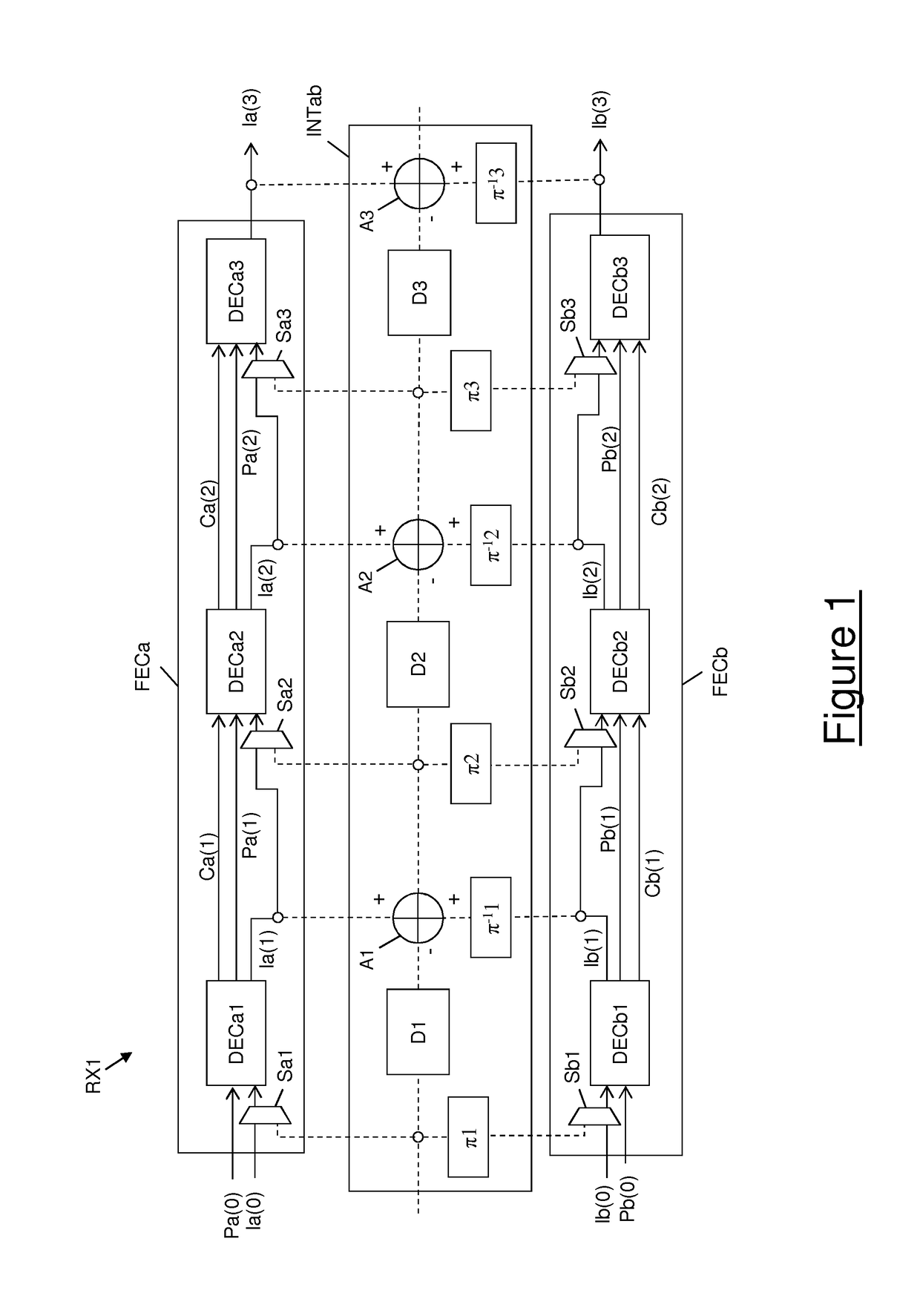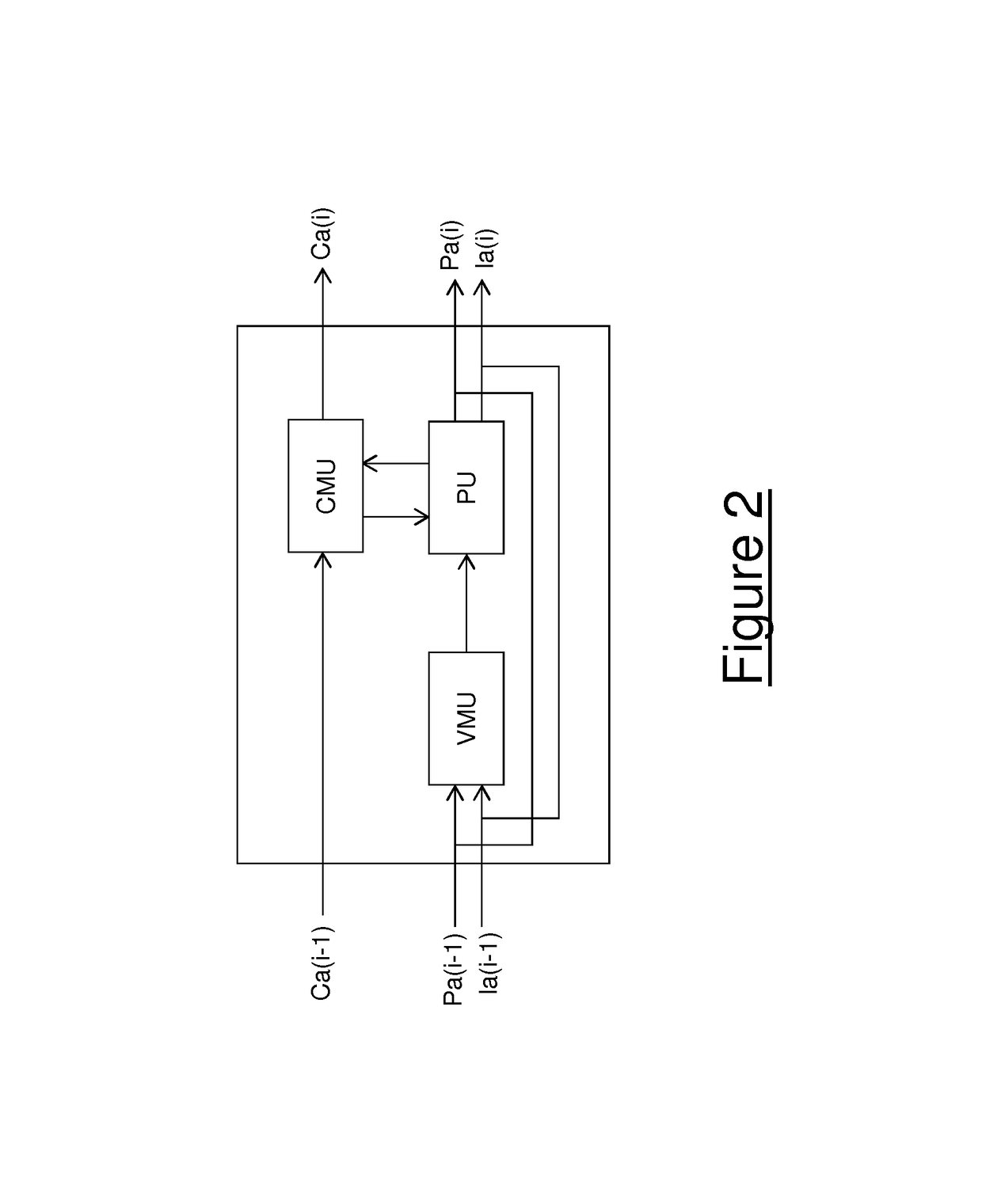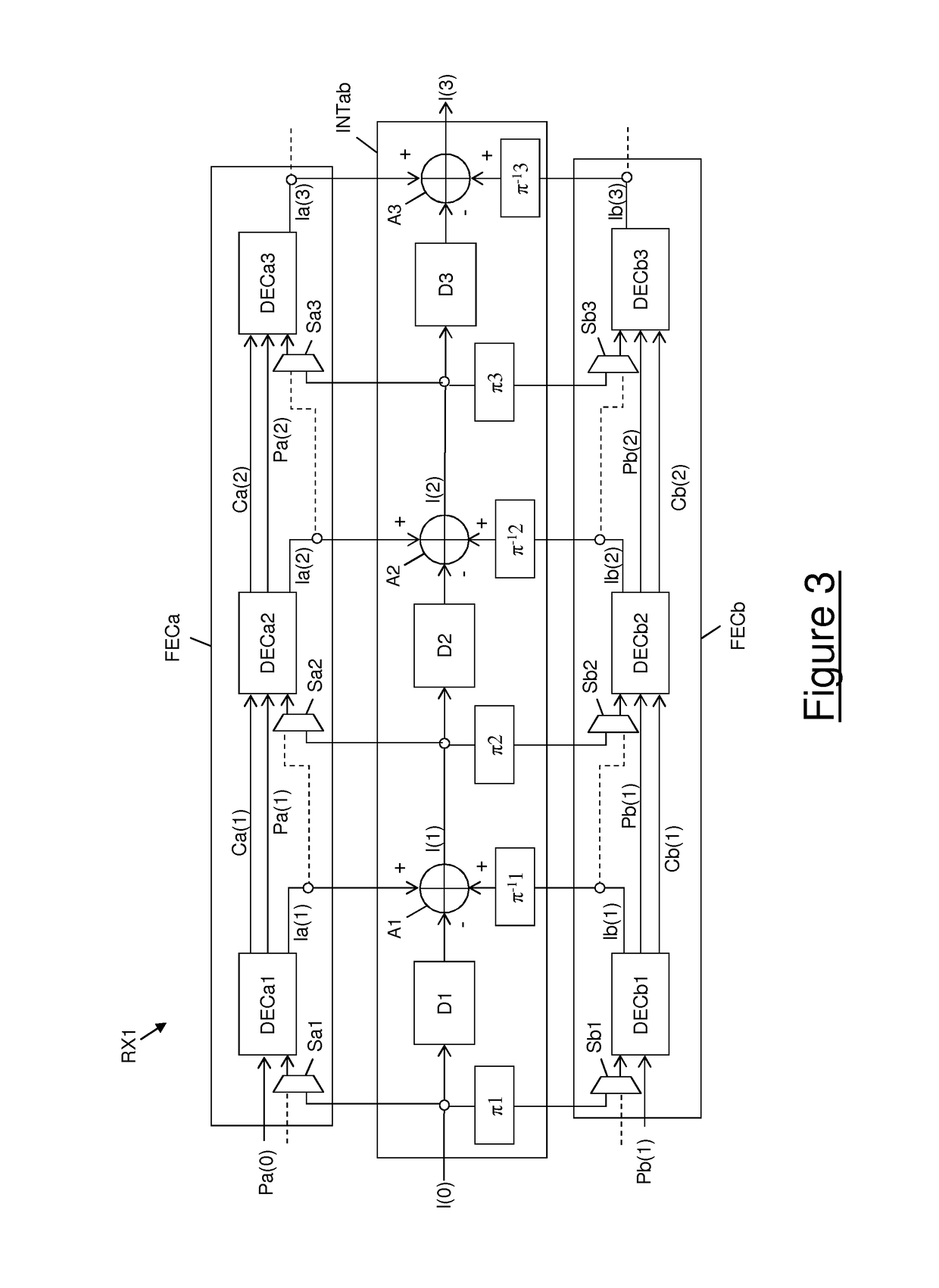Optical coherent receiver with forward error correction
a forward error correction and optical coherent technology, applied in the field of communication networks, can solve the problems of short transmission length, and achieve the effect of minimizing waste of resources and convenient operation
- Summary
- Abstract
- Description
- Claims
- Application Information
AI Technical Summary
Benefits of technology
Problems solved by technology
Method used
Image
Examples
first embodiment
[0061]FIG. 1 shows a portion of an optical coherent receiver RX1 according to the present invention.
[0062]The portion of optical coherent receiver RX1 shown in FIG. 1 comprises a number of DSP blocks (not shown for simplicity) and a number M of FEC decoding chains. For not overloading the drawing, in FIG. 1 only two decoding chains FECa and FECb are shown. In general, however, the number M of decoding chains comprised in the optical coherent receiver RX1 is equal to the maximum number of client channels which the receiver RX1 shall be able to receive and process. For instance, if the receiver RX1 shall be able to receive and process at most 10 client channels, the number M of FEC decoding chains is 10. Preferably, the number M of FEC decoding chains is an even number equal to or higher than 2.
[0063]Each FEC decoding chain FECa, FECb is preferably configured to implement an iterative, soft FEC decoding algorithm on a respective client channel, as described above. In particular, each ...
second embodiment
[0133]FIG. 4 shows an optical coherent receiver RX2 according to the present invention.
[0134]According to the second embodiment, the FEC decoding algorithm implemented by each FEC decoding chain preferably provides, as an output of each iteration, only the extrinsic probabilities of the codeword bits, instead of their whole a posteriori probabilities (which also take into account the a priori probabilities). Hence, the states lea(i), leb(i) of the variable nodes corresponding to the message bits at the output of each iteration (both in the first operating mode and in the second operating mode) only comprises the extrinsic probabilities of the message bits, namely:
[0135]∑CLea(1)VC[7a]∑CLeb(1)VC[7b]
[0136]Hence, the merged state I(i) provided at each iteration of the algorithm in the second operating mode of the receiver RX2 comprises a posteriori probabilities of the message bits which are calculated, for each message bit, as the sum of its a priori probability, its extrinsic pr...
third embodiment
[0140]FIG. 5 shows an optical coherent receiver RX3 according to the present invention.
[0141]Also according to the third embodiment, the FEC decoding algorithm implemented by each FEC decoding chain preferably provides, as an output of each iteration, only the extrinsic probabilities of the codeword bits. It shall be noticed however that, differently from the second embodiment of FIG. 4, the intermediate circuit of FIG. 5 guarantees that each decoding block receives at its message input the non-scaled, original extrinsic information which has been generated by the preceding decoding block. This allows preserving consistency between the states of the various variable nodes and check nodes, so as to avoid that the algorithm diverges.
[0142]The switches suitable for switching the receiver between the first and second operating mode are not shown in FIG. 5, for simplicity. The receiver is shown in FIG. 5 in its second operating mode.
[0143]This third embodiment exhibits the same advantage...
PUM
 Login to View More
Login to View More Abstract
Description
Claims
Application Information
 Login to View More
Login to View More - R&D
- Intellectual Property
- Life Sciences
- Materials
- Tech Scout
- Unparalleled Data Quality
- Higher Quality Content
- 60% Fewer Hallucinations
Browse by: Latest US Patents, China's latest patents, Technical Efficacy Thesaurus, Application Domain, Technology Topic, Popular Technical Reports.
© 2025 PatSnap. All rights reserved.Legal|Privacy policy|Modern Slavery Act Transparency Statement|Sitemap|About US| Contact US: help@patsnap.com



